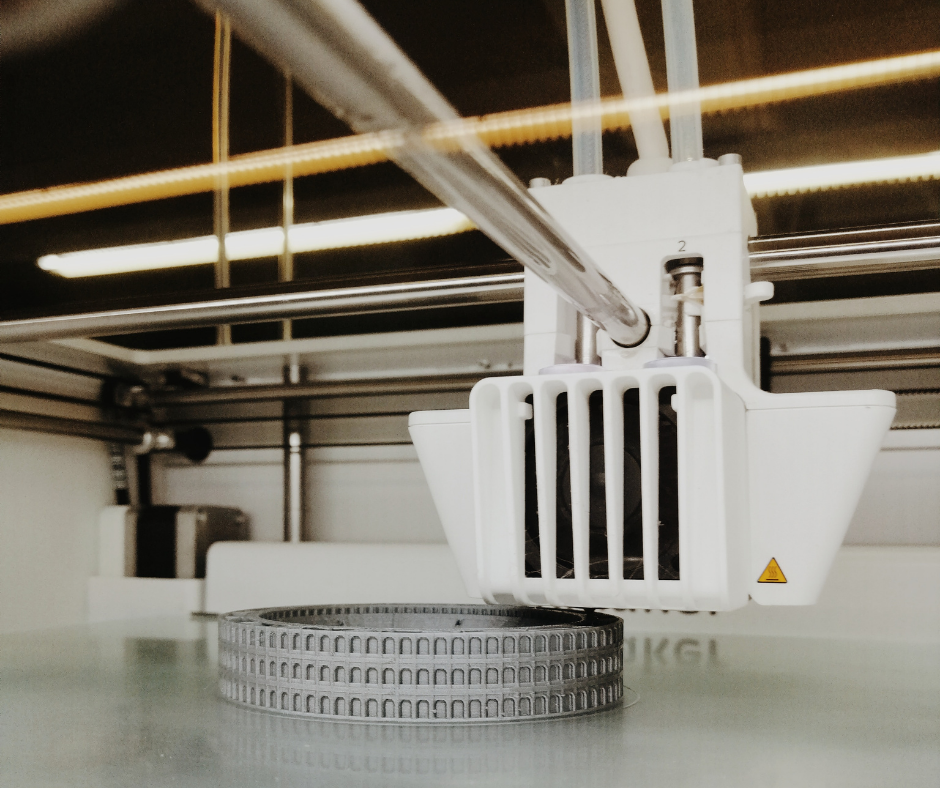Biocompatible 3D printing isn’t new to the healthcare industry, but the 2020 pandemic accelerated its growth in record time. Within weeks of the World Health Organization (WHO) declaring COVID-19 a global pandemic, U.S. hospitals began reporting shortages of medical equipment needed to treat patients. Demand rose for supplies like ventilators, personal protective equipment (PPE), and test swabs, and both manufacturing companies and individuals alike stepped up to help ease the shortage. Local businesses shifted operations to deliver solutions to their community in record time, and a new era of production and distribution began.
A market research report by SmartTech estimated that the market value for 3D printing will rise from $1.25 billion in 2019 to a whopping $6.8 billion in 2027 with global revenue focused on three main areas: orthopedics, personalized surgery, and medical devices. The world had a front-row seat to how 3D printing and biocompatible materials can reduce risks within the medical supply chain and ease shortages within the industry.
There is a lot of good here.
On top of aiding in emergency response, the personalization and diversification of medical resins allow healthcare workers to save time and provide patients with tailored solutions that fit their unique needs. Thanks to 3D printing, medical solutions are no longer one size fits all. Surgeons at Mayo Clinic are 3D printing implants to confirm adequate fit and orientation of reconstruction segments. Orthopedic implants, unique anatomical models, dental implants, and enhanced surgical tools are also on the horizon.
However, these biocompatible 3D printing resins are still a solution looking for more problems to solve. What does that mean for innovators?
You need to understand the regulatory requirements. It’s one thing to print face shield frames and alignment brackets, which are Class I medical devices and are generally exempt from Pre-Market Approval (PMA) and face minimum regulatory scrutiny. (You still have to make sure that the design IP is not owned by anyone else, particularly since 3D printing makes it so easy to copy or customize common designs.) It’s a completely different thing to 3D print Class II and III medical devices, which are subject to much more oversight by the FDA.
For example, if you want to 3D prints a wearable band for a heartrate monitor, it’s a great idea to take advantage of these types of biocompatible materials. But things are different if you want to 3D print a product that is to be used for diagnostics or for use inside the body. Then, you’d have to get FDA approval for the resin material itself, the 3D printer used in producing the product, the design, and other quality assurance mechanisms. You can’t just print it and sell it, even if the product is made of biocompatible 3D printing resins.
You’d still need to beware of IP. Sure, 3D printing makes it easy to copy designs and customize designs as you’d like. However, if you’re going to build a business around a 3D printed biocompatible product you need to also make sure you’re not selling a design that’s already owned by someone else. Also, if it’s easy for you to copy, that means it’ll be easy for other people to copy YOUR product. Are you protected?
You need to be aware of unit economics. Traditional manufacturers know this well. Scale means profit. 3D printing in small batches will usually be much more expensive per unit compared to larger volume production by an OEM or outsourced medical production house. With that in mind, 3D printing might be fine when you’re still messing with prototype designs, but as you increase your production numbers you’ll want to weigh the pros and cons, including the production time, material costs, regulatory pathway, and volume requirements.
The pandemic may have highlighted some of the opportunities on the horizon with biocompatible 3D printing, but it is only the beginning. Production has become more innovative, responsive, and agile to meet demand, but that doesn’t ignore the IP concerns surrounding the industry.
Questions? Comments? Have an IP problem that needs solving? Contact us today.





